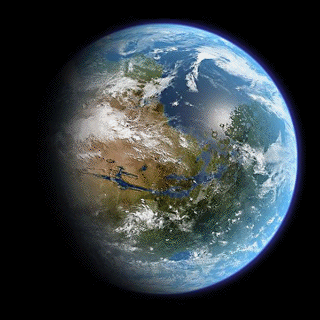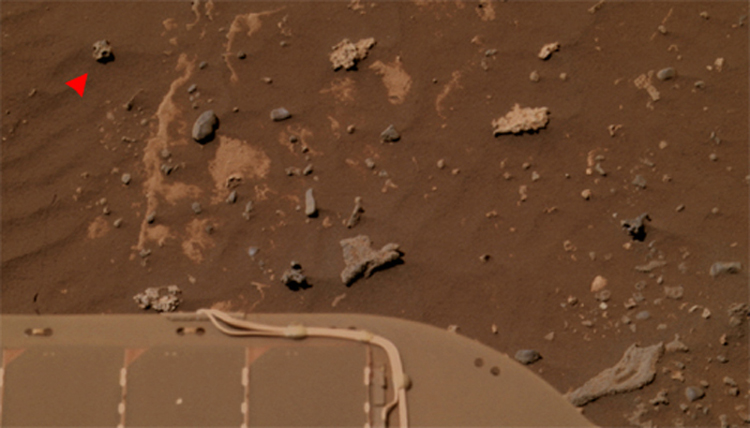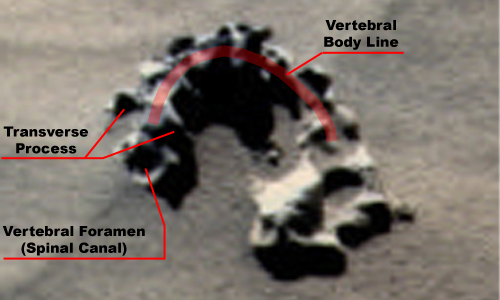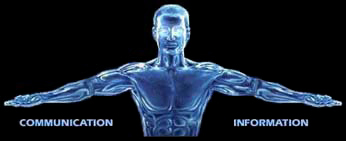Introduction
We encourage you to verify the source images for yourself, rather than just simply accept the facts that are presented here.
Exact details of the used image templates can be found here.
Some reports on this website are based on previous ones. So it is extremely important to read the reports in chronological order.
Details can turn up that were probably already been analyzed in detail. If you are new here and you directly start reading the
recent reports without prior knowledge, then it could happen that the required context is not recognizable.
You do yourself and us a favor when you first start with the oldest reports.
This is the first analysis report regarding past life within the Gusev crater. There are no previous reports. You can continue to read here.
Mars - A Dead Planet
The images that the probes and rovers have delivered from the surface of Mars so far speak for themselves. Mars appears here
mostly as lifeless, barren desert landscape. That it once looked different, can still be reported by numerous geological
formations and the various mineral finds, which can only have been created in conjunction with water. Mars once possessed therefore
a dense atmosphere and had temperatures at which water was present in liquid form. Nevertheless, there is still considerable
reluctance about whether, despite these favorable conditions, life could develop.
Basically, this reticence is entirely justified. Why would someone even want to say anything else, in view of the supplied images
and measurement data? The currently prevailing environmental conditions are certainly quite unfavorable. Mars has an atmosphere about
100 times less dense than that of earth, making it as thin as in the earth's atmosphere about 35 miles up. The proportion of carbon in
this thin "air" exceeds more than 95 percent. Oxygen with about 0.13% is only present in trace amounts. Water on Mars may also not be
present in liquid form. It can either be present only in frozen form, where it is buried under the Martian surface, protected from the sun or
it sublimates / evaporates from the solid immediately to the gaseous state. Without a protective ozone layer there is
an intense UV radiation, which destroys chemical bonds of organic molecules. Even the Mars rover Curiosity was able to confirm the
deadly UV radiation dose. At the poles, the temperatures will be around -140 degrees Celsius. Near the equator, temperatures can
reach up to about 14 degrees Celsius, while the nights pushes the temperature far into negative celsius centigrades.

Animation: Mars through the ages
Meanwhile, it can also not be ruled out that at present life in a simple form still exists, which so far has defied discovery.
In this case one would speak of microorganisms. Small, hard to spot, but also very resistant to external influences.
But apart from the question whether there is currently life on Mars, there is also the question of how it probably looked like in
past times and whether even higher evolved life have arised here.
An Inconspicuous Discovery
The possibility of past life on Mars had hitherto hardly the focus of the investigations of Mars analysis project.
Thanks to a happy coincidence this aspect plays now an important role, too. Besides to our own image analysis,
the MAP-Base team also cross-check the discoveries of other individuals and groups in the internet. At this
point we would like to thank "gforce4039", the administrator of the website
Verborgene Geheimnisse (hidden secrets). In a
specially created gallery on his webseite, he presents a collection of different structural anomalies that can be
seen on the recorded images of the Mars rover Sprits and Opportunity.
After a review of his examples a structure has fallen into the eye, which shows some very extraordinary features.
In this case, it is a quite small structural anomaly, which is located on one of the images that Mars
rover Spirit had made on its 820th operating day (according to Mars time) inside the Gusev crater:

Click on image to enlarge
A detailed analysis revealed that this structure actually represented something special.
Noteworthy is the high degree of symmetry, which can be found here. By displaying the symmetry axes
it can be shown that there more than just coincidence may be at play.

Click the image to show the markings
In the enlargement two lateral dark indentations trigger the association of eye sockets.
The structure seems to extend close to the front, showing two small spurs which could be called as incisors.
One gets the impression that we see the skull of a small rodent.
Comparison with Terrestrial Life Forms
Symmetries can also arise purely coincidental. In this case it might be simply just a stone.
More astonishing, however, are the consensuses on anatomical features that we know from small rodents skulls here on earth.
We can recognize a dark symmetrical depression in the region that one would associate with the nasal bone. The occiput
seems also have a slightly higher line or edge, which runs through the center and in turn increases the left/right symmetry.
The significance of this becomes even clearer when this alleged "Mars Skull" is contrasted directly with a series of small
animal skulls. There are many parallels in shape and structure.

Comparative examples of various small animal skulls
The assignment of anatomical features was made in the following image. By clicking the image
the markings and descriptions can be switched on and off.

Click the image to show the markings
Visualization of the Skull Shape
Discoveries like these are a rare opportunity to use techniques that enables us to display these objects in a more
tangible and vivid way. By using morphing techniques it is possible to partially rotate such objects and to get a
virtual three-dimensional representation. These techniques can be applied here because this skull shows
more than half of the front side. If it were only a side profile, it wouldn't be possible to create an appropriate
animation. To prepare it for such an animation, it is important to mark all symmetrical reference points and to
place them in relation to each other.

Marking the points of symmetry
The setting of the reference points again shows impressively the astonishing symmetry whithin this "skull".
However, a smooth animation would not be possible if this degree of symmetry would not be present in the template.

Animation: Calculated rotation of the supposed rodent skull
The animation helps us to get a better idea of the entire structure of the skull. It allows us now a view directly from the front.

Calculated front view of the supposed rodent skull
If we compare this alleged skull with a skull of a rodent, then we have to ask ourself whether it could be possible that
similar life forms have developed on Mars as on earth.

Comparison of the Mars skull with a rodent skull
Targeted Search for other Bone Pieces
At this stage some points should be clear. Assuming that the shown example is indeed the fossilized
remain of a rodent skull, then this is certainly not an isolated case. There should exist more examples showing
fossilized bone parts. It is excluded that a private research team is in the position to make such discoveries,
while institutions such as the NASA simply overlooked such structures. Either the presented analysis results are
wrong or it is not the intention of such institutions to let the public know
that evolution also has taken place outside the earth - on a different planet.
This is probably the main problem in this case. Basically it is considered as relatively safe, in scientific circles,
that there must be at least microbial life on other planets and moons. The confirmation of this must
still be delivered by an official verification. But the circumstance that there are evidences available that
indicate that higher life evolved on other planets, even in our planetary neighborhood,
would stir up our society with very significant problems. In the United States, the subject of "Evolution" has always
been a very special topic, but also for many other faith communities is the presence of other intelligent beings,
living on other planets an unimaginable and possibly an impermissible thought.
Let us consider again the "skull". Due to the previously heated claim that NASA would embezzle images, one may
ask the question whether why this image has been approved for publication. The answer for this is quite simple.
You cannot recognize that this could be a skull. Considering the original monochrome recordings of the rovers,
any structures in the sand appear to blur. There is just a stone like many others, you might assume.

Click on image to enlarge
The individual structures become more clear and are easier to distinguish, if one takes a look at the color-calculated version
of this image (Other color calculated images can be found on the page
areo.info  of Holger Isenberg). Even here the presumable skull
appears as a small, inconspicuous "stone". of Holger Isenberg). Even here the presumable skull
appears as a small, inconspicuous "stone".

Click on image to enlarge
The only objects that can theoretically avoid of being targeted by censorship, are those objects that are small and inconspicuous.
A computerized detection of such objects can hardly be effectively programmed. Here one has to rely entirely on the detection
capabilities of human inspectors. Counting all images Mars rover Spirit has sent over its various camera systems, then you will
get more than 150,000 images. It is in the nature of things that humans can not eliminate everything that is abnormal,
in view of this huge amount of image data.
Exactly at this weak point of the control function we have to focus on, in order to find what may have been overlooked.
Should this succeed, then as a consequence it would be possible not only to present further examples of bone parts,
it would be a further strong indication that the presumptions regarding a disguise of such objects seems to be realistic.
It would be strange if only one head is all that can be found in the whole serie of images. Skulls generally represent very
conspicuous structures. Probably it is even the most distinctive structure of all bone parts, which would be recognized
relatively quick within a large image capture. But large skulls also represent far too obvious structures and should not be
found on the Mars rover images. However it also seems that there are some exceptions, which we have mentioned at the end
of this report.
Another striking bone part for example is the spine. After reviewing various sample images of fossilized bone fragments
that have been found here on earth in different desert areas, such spine structures are initially difficult to recognize
as such parts. Upon closer inspection, however, it reveals the distinctive features that can also be applied for the analysis of
the Mars rover images. So, it is possible that in the series of images of the Mars rover Spirit, objects
can be found, that initially appear unobtrusively (for checkpoints easy to miss), but however, have the appropriate characteristics?
Based on this idea a search for these objects will follow next.
Other Discoveries
The following is an interesting juxtaposition of objects from Mars and examples of bone parts from earth:

Click on image to enlarge
The top row shows bone part residues originating from desert areas on earth. The bottom image row shows examples
from Mars and has been made by the Spirit rover in the period from Sol 820 and Sol 819. They indicate that the other
structures on the Mars images can also be attributed to bone parts, which are just not immediately recognizable
as such parts. It is important to know that, because it would not be consistent if we always see only skulls
on the recordings of the Rover. It is very enlightening to see what shape such bone parts and fragments can have.
Some of these fossilized bones are several million years old and in spite of their age, they are still in relatively
good condition. However, the shown objects are too unspecific to clearly derive that these parts could be
fossilized bone fragments. These examples represent just indications for the given assertion.
The next image shows a part of one of the colored calculated versions that Holger Isenberg has provided on his website
areo.info  . .
Here the direct
link to the whole image  . .

Fossilized spine?
We have been able to find an appropriate counterpart that allows an revealing comparison of the Mars structure with an animal spine,
that conveniently also has the same curvature as the original image from Mars.

Comparison of the Mars structure with an animal spine
This new object has many parallels with features of a spine. One should remember, of course, that
also weathering processes have acted here, even if they run a lot slower than on earth. The structure seems
to be partially buried in the sand and possibly continues there. It is nevertheless sufficient enough
to assign the visible details to anatomical features of a spine.

Spine Anatomy
In addition to the skull we now have a spine and probably other parts of bones that are present in the
series of images of the Mars rovers Spirit taken on Sol 819 and Sol 820. Particularly surprising is that
the targeted search on the basis of the drawn conclusions was immediately successful. Considering that
clear images are suppressed, we have to think one step ahead and have to look for details that can be
easily overlooked. Unfortunately this is not an easy task.
Thus a chain of evidences is formed which increasingly indicate that the detected
structural anomalies could represent fossilized bones parts. The conclusion which follows from
these findings can in turn be seen as evidence that the evolution on other planets
can take place in similar traits as on earth. Can we conclude that intelligent life on other planets
may have many fundamental similarities to our species?
Even with these new amazing discoveries it can not be excluded that these
objects are a product of geological processes. However, this possibility is reduced with each new structural abnormality,
that can be reconstructed and identified and thereby fits into the overall context.
Interesting Side Aspects
An exact calculation of the structure sizes can not be delivered, because various angular sizes
for a mathematical derivation are missing. First, it is only known that the so-called Pancam of the rover
is attached on a rack that rests exactly 1.50 m above ground. But that is not enough. Theoretically,
the required information must exist somewhere. It is neccessary to find out, where NASA and JPL has stored
this type of data and if they are accessible to the public. On the other hand the objects are in close
vicinity to the rover. It is also possible to reproduce the shown scenario, and to derive the sizes of the
respective structures. Depending on how the situation develops, this information will be delivered subsequently.
As chance would have it, there are also anomalies researchers, who have found skull-like objects in another place
and again on images of the Spirit rover. Many thanks indeed go to Joseph P. Skipper for his
amazing serendipity. The website, which he runs is called Mars Anomaly Research. Here is the direct
link to the mentioned report  . .
|

